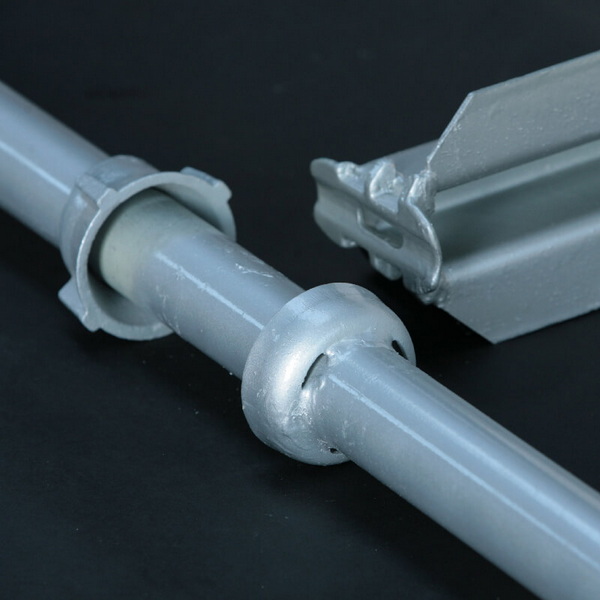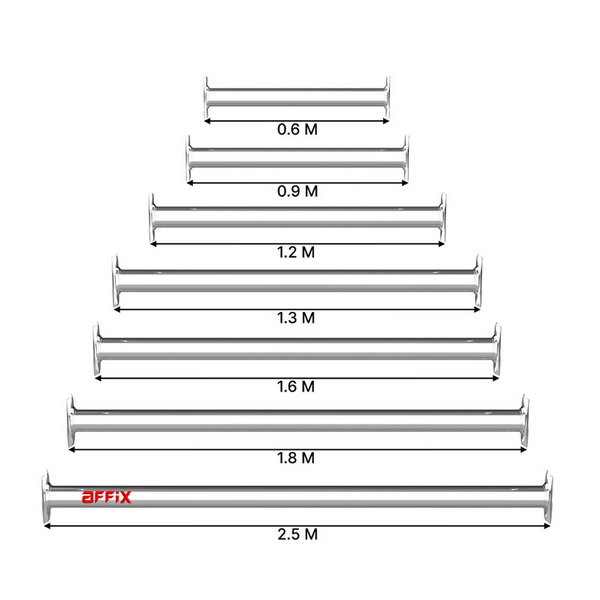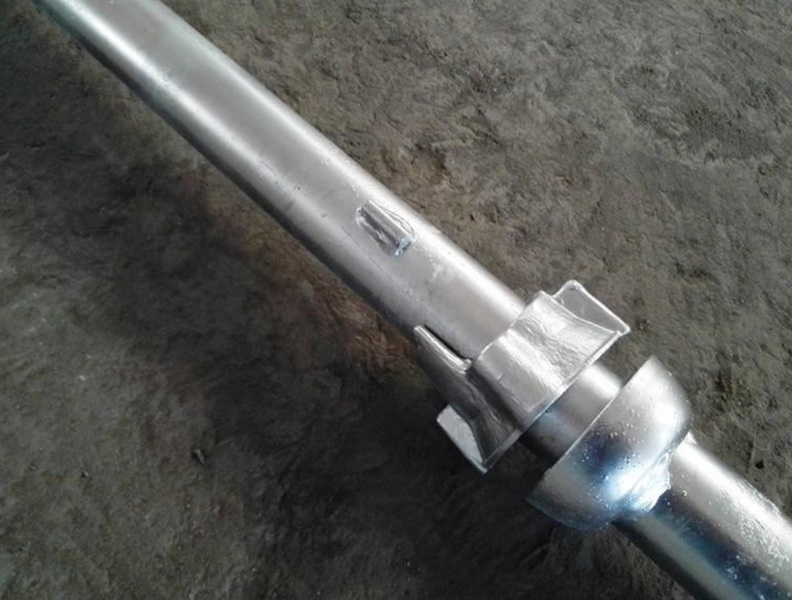Content Menu
● Components of Cuplock Scaffolding
>> 1. Vertical Standards
>> 3. Diagonal Braces
>> 4. Base Plates and Adjustable Jack
>> 5. Steel or Timber Planks
● Industry Standards for Cuplock Scaffolding Specifications
>> Material Specifications
>> Dimensional Standards
>> Load Capacity Standards
● Assembly and Erection Standards
● Height Limitations and Anchoring Requirements
● Quality Assurance and Testing
● Advantages of Cuplock Scaffolding
● Conclusion
● FAQ
>> 1. What is the maximum safe working load for cuplock scaffolding?
>> 2. How often should cuplock scaffolding be inspected?
>> 3. Can cuplock scaffolding be used for circular structures?
>> 4. What is the lifespan of cuplock scaffolding components?
>> 5. Are there any weather limitations for using cuplock scaffolding?
● Citations:
Cuplock scaffolding is a widely used modular scaffolding system in the construction industry, known for its efficiency, versatility, and adherence to quality standards. This article will explore the industry standards for cuplock scaffolding specifications, providing a comprehensive overview of its components, dimensions, materials, and safety requirements.

Components of Cuplock Scaffolding
The cuplock scaffolding system consists of several key components that work together to create a stable and adaptable structure:
1. Vertical Standards
Vertical standards, also known as uprights or poles, are the main load-bearing elements of the cuplock system. These are typically made from steel tubes with an outer diameter of 48.3mm and a wall thickness of 3.2mm or 4.0mm[1][3]. The standards feature welded cup joints at regular intervals, usually every 500mm, which allow for the attachment of horizontal and diagonal members[5].
Horizontal ledgers connect the vertical standards and provide lateral support. They are designed to lock into the cup joints on the standards, creating a secure connection without the need for additional fasteners[5].
3. Diagonal Braces
Diagonal braces, or transoms, add stability to the scaffolding structure by connecting vertical standards diagonally. These components help to distribute loads and prevent the scaffold from swaying or twisting[5].
4. Base Plates and Adjustable Jack
Base plates and adjustable jacks are used at the bottom of the vertical standards to provide a stable foundation and allow for leveling on uneven surfaces[3].
5. Steel or Timber Planks
Planks are placed on top of the horizontal ledgers to create working platforms for construction workers[5].
Industry Standards for Cuplock Scaffolding Specifications
Material Specifications
The cuplock scaffolding standard specifications require the use of high-quality steel for all components. The steel used typically has a yield strength of at least 235 N/mm², with some manufacturers offering higher-grade steel with a yield strength of 355 N/mm²[1].
Dimensional Standards
1. Vertical Standards:
- Outer Diameter: 48.3mm
- Wall Thickness: 3.2mm or 4.0mm
- Cup Joint Intervals: 500mm[1][3]
2. Horizontal Ledgers and Diagonal Braces:
- Outer Diameter: 48.3mm
- Wall Thickness: 3.2mm[3]
3. Base Plates:
- Typically 150mm x 150mm square plates with a thickness of 5mm[3]
Load Capacity Standards
The load capacity of cuplock scaffolding components is crucial for ensuring safety in construction. Here are some typical load capacities based on industry standards:
1. Vertical Standards:
- Ultimate Load: Varies based on height and configuration
- Safety Factor: 3:1[3]
2. Horizontal Ledgers:
- Ultimate Load: 21-48 KN (depending on length)
- Safety Factor: 3:1[3]
Cuplock scaffolding must comply with various safety standards, including:
1. EN 12810: European standard for prefabricated scaffold systems[3]
2. BS 1139: British Standard for metal scaffolding[1]
3. OSHA regulations: U.S. Occupational Safety and Health Administration guidelines for scaffolding safety
These standards cover aspects such as material quality, load-bearing capacity, stability, and fall protection requirements.

Assembly and Erection Standards
Proper assembly of cuplock scaffolding is critical for ensuring safety and stability. The following steps outline the standard procedure for erecting cuplock scaffolding:
1. Place base plates at required positions
2. Install vertical standards on base plates
3. Connect horizontal ledgers between standards
4. Use a spirit level to ensure levelness of ledgers
5. Adjust base jacks to achieve a level first layer
6. Check squareness of bays
7. Lock ledgers using top cups
8. Install steel or timber planks to form working platforms
9. Continue building upwards, adding additional standards, ledgers, and braces as needed[3]
Height Limitations and Anchoring Requirements
Industry standards specify maximum heights for different types of cuplock scaffolding configurations:
- Single (putlog) Scaffold: 24m
- Double Scaffolding: 50m
- Cantilever Scaffold: 20m
- Full Framing Scaffold: 30m[3]
For scaffolding exceeding these heights, professional design and safety calculations are required. Additionally, cuplock scaffolding must be anchored to fixed structures using anchor tubes and eye bolts when the height exceeds 40 meters[3].
Quality Assurance and Testing
To ensure compliance with industry standards, cuplock scaffolding components undergo rigorous testing:
1. Material Testing: Steel raw materials are tested according to BS1139 standard[1]
2. Cup Strength Testing: Cuplock cups are tested before mass production[1]
3. Load Capacity Testing: Components are tested to determine ultimate load and safety factors[3]
Regular maintenance and inspection of cuplock scaffolding are essential for ensuring ongoing safety and compliance with industry standards. Key aspects include:
1. Visual inspection before each use
2. Periodic thorough examinations by qualified personnel
3. Replacement of damaged or worn components
4. Proper cleaning and storage of scaffolding elements
Advantages of Cuplock Scaffolding
The cuplock scaffolding system offers several advantages that contribute to its widespread use:
1. Easy Assembly and Disassembly: The unique cup-node point allows for quick and secure connections[7]
2. Versatility: Suitable for various applications, including general access, support structures, and specialized configurations[5]
3. High Load-Bearing Capacity: Engineered to support heavy loads safely[3]
4. Cost-Effective: Reduces labor costs and assembly time[7]
5. Compliance with Safety Standards: Meets or exceeds industry safety requirements[3]
Conclusion
Cuplock scaffolding standard specifications are designed to ensure safety, efficiency, and reliability in construction projects. By adhering to industry standards for materials, dimensions, load capacities, and assembly procedures, cuplock scaffolding provides a versatile and robust solution for temporary work platforms and support structures. As the construction industry continues to evolve, these standards will likely be refined and updated to meet new challenges and safety requirements.

FAQ
1. What is the maximum safe working load for cuplock scaffolding?
The maximum safe working load for cuplock scaffolding varies depending on the configuration and component specifications. Typically, vertical standards can support loads ranging from 35 to 58 KN, while horizontal ledgers have a safe working load of 7 to 16 KN, depending on their length[3]. Always consult the manufacturer's specifications and perform proper load calculations for your specific setup.
2. How often should cuplock scaffolding be inspected?
Cuplock scaffolding should be visually inspected before each use. Additionally, a thorough examination by a qualified person should be conducted at regular intervals, typically every 7 days or after any significant alterations or extreme weather conditions. Some jurisdictions may require more frequent inspections, so it's essential to check local regulations.
3. Can cuplock scaffolding be used for circular structures?
Yes, cuplock scaffolding can be adapted for use on circular structures. The system's versatility allows for the creation of curved configurations by using shorter ledger lengths and adjusting the angles between standards. However, special planning and additional components may be required to ensure stability and proper fit.
4. What is the lifespan of cuplock scaffolding components?
The lifespan of cuplock scaffolding components depends on various factors, including usage frequency, maintenance, and storage conditions. With proper care and regular inspections, high-quality cuplock scaffolding can last for many years. However, it's crucial to replace any damaged or excessively worn components immediately to maintain safety standards.
5. Are there any weather limitations for using cuplock scaffolding?
While cuplock scaffolding is designed to withstand various weather conditions, extreme weather can pose safety risks. High winds, heavy rain, or icy conditions may require additional precautions or temporary dismantling of the scaffold. Always follow local regulations and manufacturer guidelines regarding weather limitations, and conduct risk assessments before working on scaffolding in adverse conditions.
Citations:
[1] https://www.wm-scaffold.com/cuplock-scaffolding-standard.html
[2] https://pmc.ncbi.nlm.nih.gov/articles/PMC8750143/
[3] https://www.wm-scaffold.com/cup-lock-scaffold.html
[4] https://www.sohu.com/a/340156487_770312
[5] https://www.linkedin.com/pulse/cuplock-system-scaffolding-versatile-quality-assured-scaffold-mishra
[6] https://www.safeworkaustralia.gov.au/system/files/documents/1703/scaffolds-scaffolding-work-general-guide.docx
[7] https://www.sparsteel.com/blog/cuplock-scaffolding-types-uses-and-benefits/
[8] https://patents.google.com/patent/CN116498051B/zh
[9] https://www.indiamart.com/proddetail/cuplock-scaffolding-8568016030.html






















